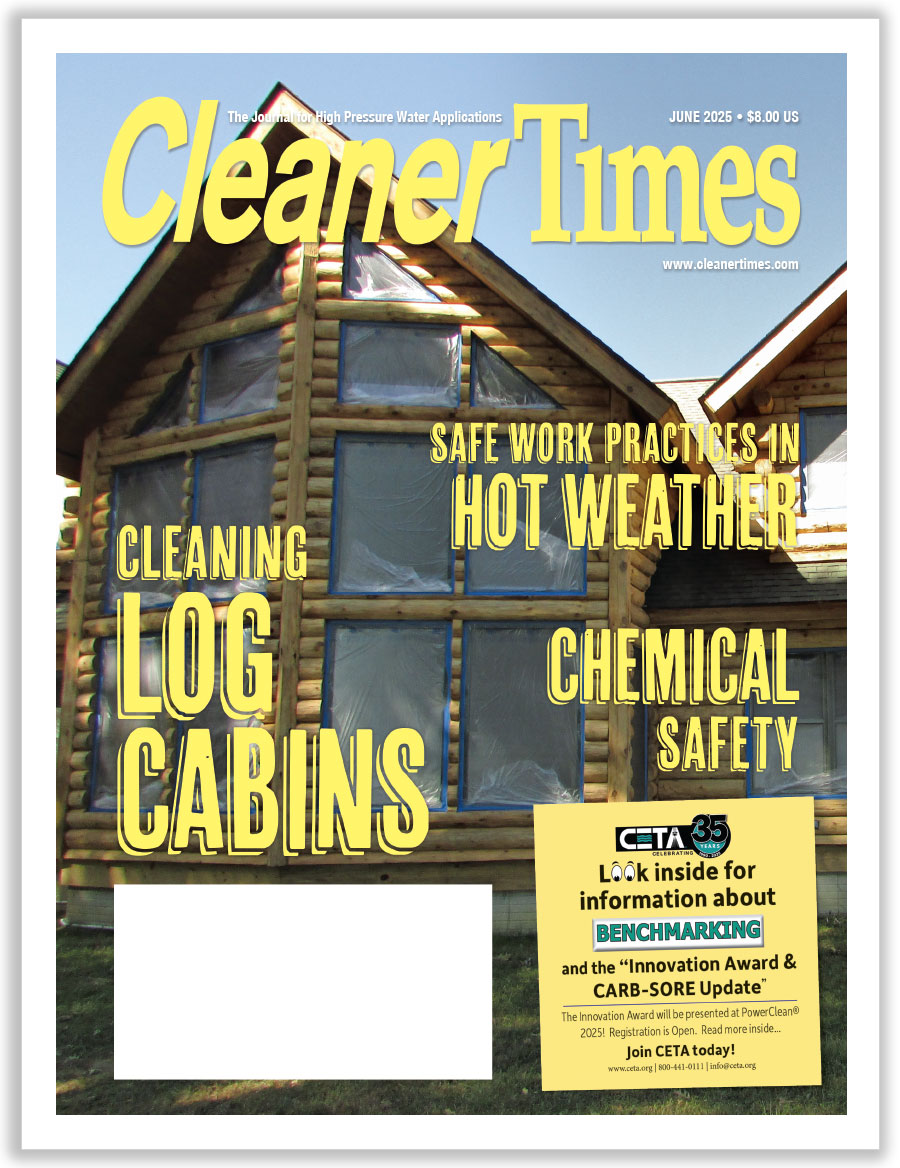
Care for Buildings and Physical Assets
By Diane M. Calabrese / Published November 2018

A laissez-faire approach to care for buildings and physical assets could work. Any-thing might happen someday.
With an extraordinary run of good luck, it’s possible that structural components of buildings will not deteriorate, inventory will not disappear, and insects and rodents will never enter a facility. It’s possible, but it’s about as probable as encountering a black hole on planet earth.
To avoid—or at least minimize—disruptions to business, every manufacturer, distributor, and contractor must have a plan to care for buildings and physical assets. Moreover, should an owner suddenly want to sell a business—for whatever reason—the plan guarantees the business is always market ready.
A solid plan includes a routine maintenance and inspection schedule, budgeting for sure-to-be-needed updates (e.g., roofs, HVAC, vehicles), and insurance against losses. Yes, it also requires an investment of time and personnel.
To make a plan as manageable as it is thorough, dividing responsibility can help. “It is better to have more people involved since we have three partners,” says Eric Weimer, president of Bozeman Distributors, Baton Rouge, LA. “We split responsibilities for different parts of building repairs and upgrades.”
Regular review of the integrity of structures and physical assets is important. “It should be done at least once a year,” says Weimer, emphasizing “the exceptions of any immediate breakdowns or crises” that require fast and direct attention.
As a business grows, routine maintenance will often converge with an evaluation of whether it’s more prudent to stay and upgrade or move. Weimer’s company has had experience with both choices.
In the early 1980s, Weimer’s company moved to its existing location. In doing so, it gained “a larger facility which was more con-veniently located for our vast customer base,” he explains.
Expansion has occurred in more recent years. “Five years ago, we added a larger showroom, extended the warehouse and storage areas,
and did a complete facelift to the exterior of the business, which increased our walk-in traffic in the retail area,” explains Weimer.
Moves and significant upgrades benefit from the combined expertise of all team members, says Weimer. “All team members’ input was very important, and we valued any and all suggestions.”
In addition to protecting buildings and physical assets by keeping them in excellent condition, be certain to also protect them against unexpected loss. “Everyone should have every type of insurance required to cover the replacement cost of all assets,” says Weimer.
The assets include such things as the “physical building, inventory, equipment, furniture and fixtures, and computer systems,” explains Weimer. Anything that can be damaged or carried away by a thief should be insured.
Take nothing for granted. Vehicle owners insure against vandalism and against theft of a vehicle. They should also be certain their policy includes theft of parts of a vehicle.
Several years ago, theft of air bags was very common in the mid-Atlantic region. More recently, wheels are being stolen from vehicles. So sophisticated are the thieves that they seemingly work faster than the pit teams supporting the drivers in the Indianapolis 500. According to police, they can arrive, take the wheels off a vehicle, and depart in under 60 seconds.
Wheel thieves generally strike between 2–3:30 a.m. In the workday morning, a driver finds cinder blocks instead of wheels.
Things Happen
Insurance is a must. Getting it requires the demonstration that assets are in good condition.
“Either before or after a policy is put into effect, an inspection will be done on the insured property,” says Tom Svrcek, president of the Joseph D. Walters Insurance Agency in Belle Vernon, PA. “If the site inspection does not match up with the signed application, the carrier has the right to send notice of cancellation.”
There’s no way to prevent bad things from happening. They will happen regardless of precautions taken. But after prevention of the almost-always preventable, such as leaky roofs, is put in place, insurance takes over.
“Insurance is a way to manage your risk,” says Svrcek. “If you own a building, mortgage lenders require you to protect that building—especially their interest. As far as the business personal property, if there is a loan on content items, it’s mandatory to have coverage.”
The potential size of a loss makes insurance a need of almost every business. Yes, most could quickly access funds to replace a windshield on a vandalized vehicle, but it’s a different matter if the entire vehicle disappears.
“Very few people could afford repairs and replacement without the help of insurance,” says Svrcek. “If properly insured, your policy will pay out at the time of an incident and makes sure your financial position is unaffected.”
Finding and securing insurance that best manages risk is not just a matter of signing up and paying a premium without reading the fine print. “Insurance coverage can vary quite a bit,” says Svrcek. “For example, a customer can call and get a quote to buy a policy on a building for $300,000.”
If the amount matches the replacement value of the building, the quote will seem reasonable. “But there might be 20 variations and coverage differences between 20 different carriers,” says Svrcek. “The average guy would never know. That’s why it’s always important to deal with an agent who specializes—a professional agent who understands what you do.”
Svrcek provides a few tips that apply to any sort of insurance. “Always deal with a national carrier that will give you the service you need,” he says. “You hear people talk about insurance and hear, ‘Hey, I got this policy for one-half the price’—but chances are, there is a huge difference in coverage.”
The time to identify limitations is prior to buying. “It’s when you have a claim that you’ll know for sure if your insurance is good or not,” says Svrcek.
Try to be certain the insurance is all that is needed. To do so, “Deal with someone you trust,” says Svrcek.
Helping Hands
Business owners who properly care for buildings and physical assets do much more than fortify their individual enterprises. They also improve the well-being of communities.
The one-bad-apple adage is a reminder few need. Most can recall an incidence where a structure fell into such disrepair it led to the demise of the business. And worse, it eventually led to surrounding businesses being tarnished and weakened by a faulty or vacant structure nearby.
So important is care of buildings and assets to the vitality of communities that many parties have aligned to provide advice and information on new technologies that business owners can tap. The National Institute of Building Sciences (NIBS) is such a party.
NIBS has developed the Whole Building Design Guide® (WBDG). The WBDG is a web-based gateway to information on design techniques and technologies. One primer available is the very valuable “Facilities Operations & Maintenance—An Overview” by Don Sapp (https://www.wbdg.org/facilities-operations-maintenance).
As Sapp notes in the introduction to his text, operations and maintenance (O&M) are considered jointly because if maintenance is neglected, a facility cannot operate at its peak efficiency. It’s an admonishment to take to heart.
For manufacturers in our industry, a belt along a production line that should have been replaced before it frayed or snapped might be what reduces efficiency. For distributors, a service vehicle that did not have its worn wipers replaced could keep a driver off the road during a rainstorm. And a contractor who skips the daily checks on his pressure washers could have to idle part of his equipment roster at a time when jobs are tightly booked.
Sapp cites five outcomes of a comprehensive maintenance program. The first four are a reduction in capital repairs, a reduction in un-scheduled shutdowns (for repairs), an extension of the lifespan of equipment, and a realization of cost savings over the life-cycle of equipment and structures.
The fifth outcome is one that deserves great attention. It is the way in which a comprehensive maintenance program contributes to safety. When equipment and parts of facilities are used as designed and maintained as designed, safety is enhanced.
The WBDG document is a valuable resource. For those looking for leads to computerized management systems for maintenance, for example, there are good suggestions. Topics introduced include everything from deferred maintenance and sustainability to teardowns. There are also excellent leads to training courses and metrics for assessment.
In the category of sustainability, Sapp writes that an O&M program that is well run will conserve energy and water and use resources efficiently. As such, care of buildings and physical assets is a natural corollary to what the members of our industry are working toward each day in terms of accomplishing the most with the least water and energy—and ardent recycling.
Significance of the information consolidated by NIBS at the WBDG website is illustrated by the groups that fund the NIBS to offer the site. Among the supporters are the Department of Defense, the Army Corps of Engineers, the U.S. General Services Administration, the Department of Veterans Affairs, and the National Aeronautics and Space Administration.





